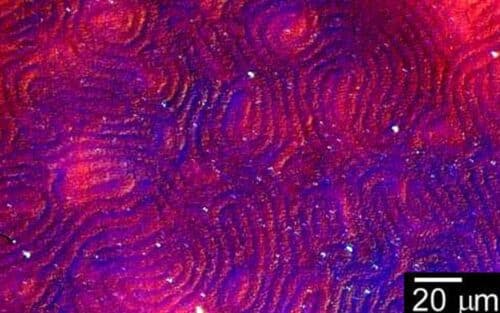A researcher at the University of Tsukuba has developed a method for manufacturing optically active polymers using a helical liquid crystal template, which could lead to the use of circularly polarised light in future computer and television screens.

In recent years, TV sizes have dramatically increased while prices have decreased. The introduction of organic light-emitting devices (OLEDs), which are carbon-based polymers that can glow at tunable optical wavelengths, is largely responsible for this. These alternating single and double bond conjugated polymers are both electrically conductive and have hues that may be altered by chemical doping with other molecules. However, future progress may necessitate the development of new materials that can exploit additional optical features, such as circular polarisation.
Now, a researcher from the University of Tsukuba, Hiromasa Goto, has introduced a technique for creating polymers locked into a helical configuration, using a sacrificial liquid crystal template. “Polymers that both have optical activity and luminescent function can emit circularly polarized light,” author Professor Hiromasa Goto says.
For this process, the liquid crystal molecules were originally in a straight configuration. The addition of monomer molecules caused the liquid crystals to twist into a helical configuration. This imprints a “chirality” or handedness to the structure, making it oriented either clockwise or counterclockwise. An electric voltage was applied, which triggered polymerization of the monomers. The liquid crystal template was then removed, leaving a polymer frozen in a helical shape.
The polymer may convert linearly polarised light into circular polarisation by breaking the mirror symmetry. The furan rings in the polymer help stabilise the helical shape as well as contribute to electrical conductivity. “The pi-stacking interactions between the rings allows the polymer to aggregate into a highly ordered chiral system,” Professor Goto says. The resultant polymer was found to have considerable optical activity at visible wavelengths. This approach could lead to cheaper and more energy-efficient electronic displays in the future.
The work is published in Molecular Crystals and Liquid Crystals as “Reaction field induction self-amplification optical activity during polymerization in liquid crystal”.






